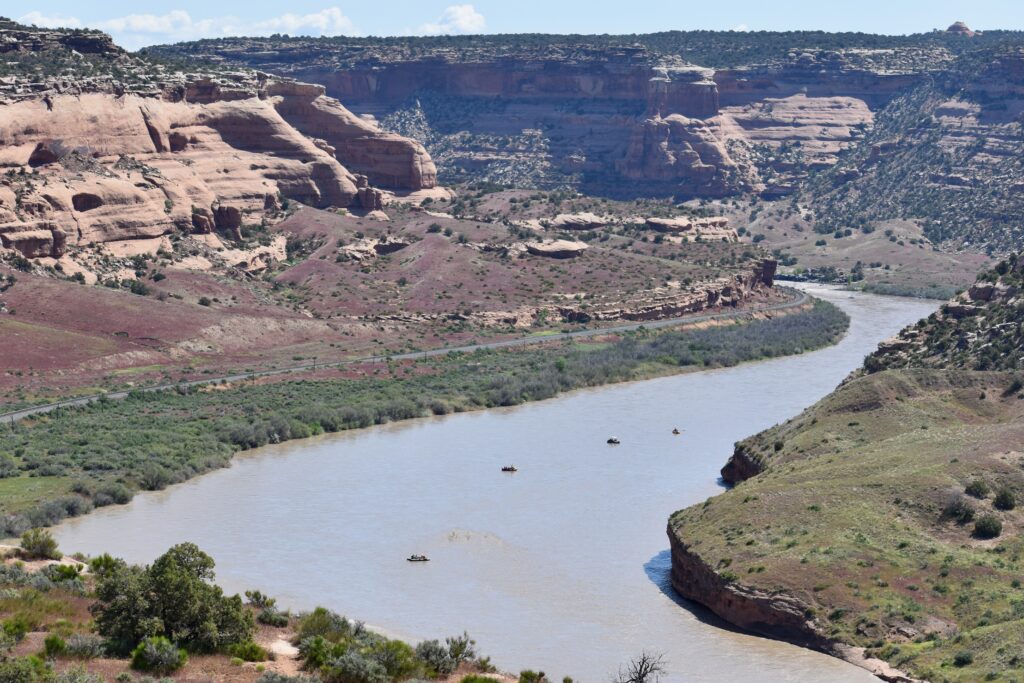Rafters float down the Colorado River in Horsethief Canyon near the Colorado-Utah border on May 15, 2023. (Chase Woodruff/Colorado Newsline)
State wildlife officials detected zebra mussel larvae in three spots along the Colorado River earlier this month, a sign that the invasive species could be spreading in the waterway.
Zebra mussels pose an extreme risk of ecological impacts, officials say.
Plankton samples from the Government Highline Canal east of Grand Junction and locations upstream from the Grand Valley Water Users Canal diversion in Mesa County tested positive for zebra mussel DNA, Colorado Parks and Wildlife announced Tuesday. The samples were taken one week apart, on July 1 and July 8.
No adult zebra mussels were found.
GET THE MORNING HEADLINES DELIVERED TO YOUR INBOX
Zebra mussels are dangerous to water ecosystems because they strip plankton, an essential food source, from the water. Additionally, they can threaten water infrastructure because they attach to surfaces like docks and dams and are extremely difficult to remove.
“This news is devastating,” Tina Bergonzini, Grand Valley Water Users Association General Manager, said in a statement. “Having our canal and the Colorado River test positive increases the threat of this invasive species and could impact everyone in the Grand Valley. From irrigation to drinking water, the ramifications cannot be underestimated or overstated.”
This image shows a zebra mussel veliger discovered by Colorado Parks and Wildlife in the Colorado River near Grand Junction after routine testing in early July. A veliger is the mussel’s free-floating larval stage that can be seen only under a microscope. (CPW)
The Colorado River serves seven states and about 40 million people, who rely on it for irrigation and drinking water.
The tested locations are now considered “suspect” for zebra mussel presence. CPW has increased their sampling to determine if that classification should be changed to “positive,” which would happen if two subsequent samplings in the same body of water detect mussel larvae, known as veligers.
Officials first found zebra mussels at Highline Lake near the Utah border in 2022. The mussels are present in 33 states, mostly in the Midwest and Great Lakes regions.
“Detecting mussels in the Colorado River highlights how critical it is for boaters, paddlers, anglers, and any person recreating in Colorado’s waters to do their part in preventing the spread,” Robert Walters, CPW’s Invasive Species Program Manager, said in a statement.
CPW urges anyone using the Colorado River to clean, drain, and dry their vessels and equipment — including boats, rafts, kayaks, paddle boards and fishing equipment — after they leave the water.
SUPPORT NEWS YOU TRUST.
The post Zebra mussels, which pose ‘extreme risk,’ found in Colorado River near Grand Junction appeared first on Colorado Newsline.

